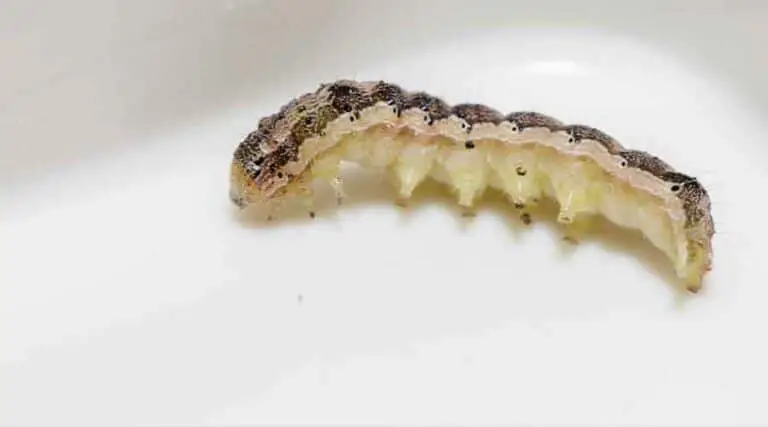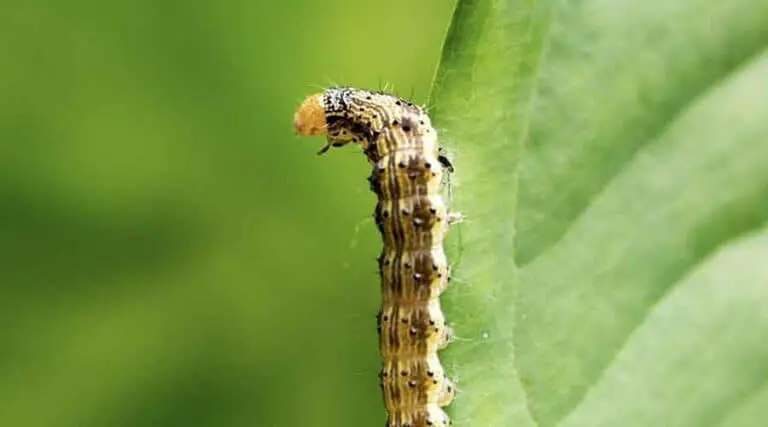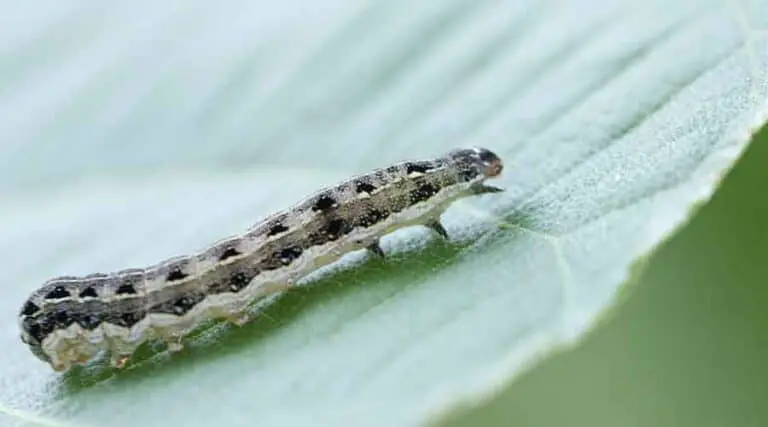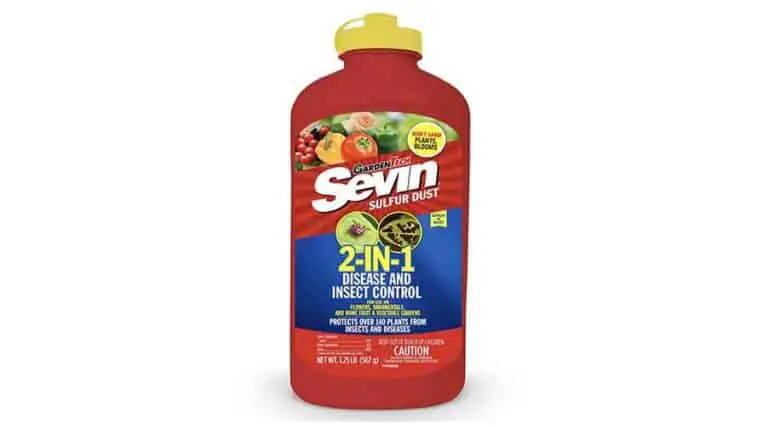Where Do Cutworms Come From: Origins and Lifecycle Explained
Cutworms are a notorious pest that can cause significant damage to crops and gardens and are often the bane of farmers and gardeners alike. These pests, which are actually the larvae of various species of nocturnal moths, feed on the stems and seedlings of young plants, potentially ruining entire harvests if left unchecked. The origin and lifecycle of cutworms can provide valuable insights into how they proliferate and how to best control or prevent infestations.
These destructive larvae often begin their life in areas surrounding fields and gardens, hatching from eggs laid by the adult moths. One study on black cutworms suggests that the larvae found on greens originate from the surrounding areas, such as where clippings are collected and stored. Typically, adult moths lay their eggs on low-growing plants, weeds, or debris in the area during late winter or early spring, giving rise to a new generation of hungry cutworms ready to infest nearby plants come springtime.
Understanding the lifecycle of cutworms and the environmental factors that contribute to their development can aid in the development of effective control measures, such as targeted insecticide applications or the use of natural predators. With this knowledge, farmers and gardeners can better protect their plants and crops from the ravages of these destructive pests.
What Are Cutworms
Cutworms are the larval stage of various species of moths belonging to the Noctuidae family. They are known for their destructive behaviors in gardens and agricultural fields, where they feed on the stems and foliage of young plants. This can cause significant damage to crops and ornamental plants, particularly in the early stages of their growth.
There are several species of cutworms distributed globally, but some of the most common types include the black cutworm, the pale western cutworm, and the western bean cutworm. These caterpillars are typically gray, brown, or black in color and have a smooth, hairless appearance. They tend to hide in the soil during the day and emerge to feed at night, making them difficult to spot.
The life cycle of cutworms consists of four stages: egg, larva, pupa, and adult moth. Adult cutworm moths lay their eggs on the leaves of plants or in nearby soil. After hatching, the larvae feed on plants for several weeks before pupating and transforming into adult moths. This process can take anywhere from a few weeks to a few months, depending on factors like temperature and food availability.
It’s essential for gardeners and farmers to be aware of the presence of cutworms in their fields, as early detection and controlling measures can prevent significant crop loss. Some common methods for managing cutworms include:
- Monitoring and scouting fields for early signs of infestation
- Employing natural predators, like birds and beneficial insects
- Using pheromone traps to monitor adult moth populations
- Applying insecticides when necessary
In summary, cutworms are moth larvae that feed on the stems and foliage of young plants, resulting in severe damage. Early detection and proper management techniques are vital in combating these garden pests and ensuring healthy crop growth.
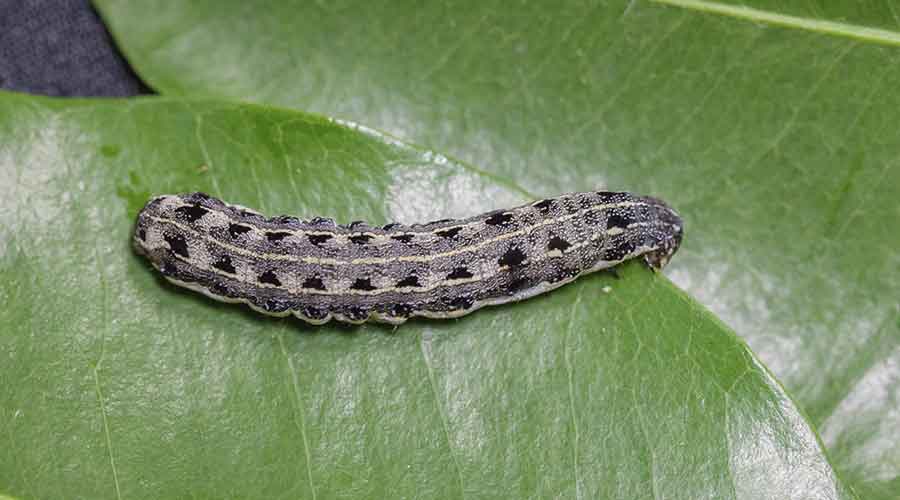
Life Cycle of Cutworms
Cutworms are pests that can cause significant damage to various plants. Understanding their life cycle can be helpful in managing their populations and controlling their impact.
Eggs
Female cutworms lay clusters of eggs on plant stems, leaves, or debris near the plants they prefer. The number of eggs produced by the female cutworm depends on the species and temperature (source). These eggs are small, round, and often covered with a protective layer. The incubation period ranges from a few days to a couple of weeks depending on the specific species and environmental conditions.
Larvae
After hatching, the larvae go through various stages of development, known as instars. They transition from small, translucent caterpillars into larger, more distinct cutworms. The larval stage is the primary stage during which the cutworms feed on plant tissue and cause damage. As they grow, cutworms can increase their feeding behavior, cutting off plant stems and causing significant damage to crops. The duration of the larval stage varies depending on factors like temperature and species (source).
Pupae
Once larvae reach their final instar stage, they will burrow into the soil and pupate. Pupation involves the larvae forming a cocoon-like structure where they undergo metamorphosis. This stage generally lasts two to four weeks, depending on environmental factors and the specific species. Some cutworm species may have prolonged diapause periods as pupae in response to seasonal changes.
Adults
Emerging as fully-formed adult moths, cutworms will leave the soil and begin searching for mates. Adult cutworm moths are typically nocturnal and actively mate and lay eggs during the night. The adult stage is typically short-lived, lasting anywhere from a few days to a couple of weeks. As adults, cutworm moths do not cause damage to plants; instead, their primary focus is on mating and reproducing (source).
In summary, the life cycle of cutworms includes the egg, larval, pupal, and adult stages. Understanding the various stages can help guide effective management strategies and limit their impact on agriculture and horticulture.
Origins of Cutworms
Cutworms are a group of insects in the moth family Noctuidae. They are particularly known for their larvae, which feed on the stems and foliage of various plants, often causing significant damage to agricultural crops. The name “cutworm” is derived from their behavior of “cutting” plants at their base, causing the plants to fall and eventually die.
The evolutionary origins of cutworms can be traced back to the Lepidoptera family, encompassing both moths and butterflies. These insects have undergone significant changes over time, adapting to different environmental conditions and feeding habits. Some of the factors that contributed to the diversification of cutworms and related species include:
- Adaptation to various host plants
- Development of specialized feeding mechanisms
- Changes in geographic distribution
As nocturnal insects, cutworms have developed certain characteristics that allow them to thrive in their environments. One key feature is their reliance on chemosensory systems for detecting host plants and mate selection. Additionally, cutworms exhibit various defense mechanisms, such as the production of toxic compounds and the use of camouflage.
There are numerous species of cutworms distributed across the globe, each with distinct habits and preferred host plants. Some common cutworm species include:
- Black cutworm (Agrotis ipsilon): This species is known to cause significant damage to corn, cotton, and other crops in North America. The black cutworm has a wide geographic distribution and is particularly problematic in the Midwestern United States.
- Variegated cutworm (Peridroma saucia): Found in various regions of the United States and Canada, the variegated cutworm is known to attack vegetables, ornamentals, and field crops.
- Common cutworm (Spodoptera litura): This species is prevalent in Asia and is known to feed on a wide range of host plants. The biological aspects of the common cutworm have been extensively studied for pest management and control purposes.
Understanding the origins and characteristics of cutworms is essential for the development of effective pest control methods. Researchers continue to study the genetics and biology of these insects in order to minimize their impact on agriculture and protect valuable crops from damage.
Types of Cutworms
Cutworms are the larvae of various species of moths belonging to the Noctuidae family. These pests can cause significant damage to a wide range of plants by feeding on their stems, leaves, and roots. In this section, we will discuss two main types of cutworms: Surface Cutworms and Subterranean Cutworms.
Surface Cutworms
Surface cutworms are typically found feeding on the stems and leaves of plants above the soil surface. They are nocturnal feeders and hide under plant debris or in the soil during the day. Some common species of surface cutworms include the Variegated Cutworm (Peridroma saucia) and the Black Cutworm (Agrotis ipsilon). The damage caused by these cutworms can be identified by irregular holes on the leaves and severed stems of plants.
Prevention and control measures for surface cutworms include:
- Regularly inspecting plants for presence of cutworms and their damage
- Removing plant debris and maintaining proper sanitation in the garden
- Introducing natural predators such as birds and beneficial insects like ground beetles
Subterranean Cutworms
Subterranean cutworms are more elusive, as they feed on plant roots below the soil surface. The most common species in this category is the Glassy Cutworm (Crymodes devastator). These pests can cause severe damage to the plants’ root system, eventually causing the plant to wilt and die.
The following are some control and prevention measures for subterranean cutworms:
- Using insecticides specifically designed for subterranean cutworm control
- Employing crop rotation techniques to break the life cycle of these pests
- Inter-planting different crops to confuse the cutworms and disrupt their feeding patterns
It is crucial to properly identify the type of cutworms infesting your plants in order to implement effective control measures. By understanding the distinctions between surface and subterranean cutworms, you can better protect your plants and maintain a healthy gardening environment.
Effects on Agriculture and Horticulture
Cutworms are bothersome pests that have a significant impact on agriculture and horticulture. They are the larvae of several species of nocturnal moths belonging to the Noctuidae family. These pests are found in various regions and can cause substantial damage to many agricultural and horticultural crops1.
The damage caused by cutworms primarily occurs during their larval stage, as they feed on the stems and roots of plants. They are known to destroy seedlings and young plants, leading to reduced crop yields and economic losses for farmers2. In some situations, cutworm infestations can result in crop failure if not managed properly.
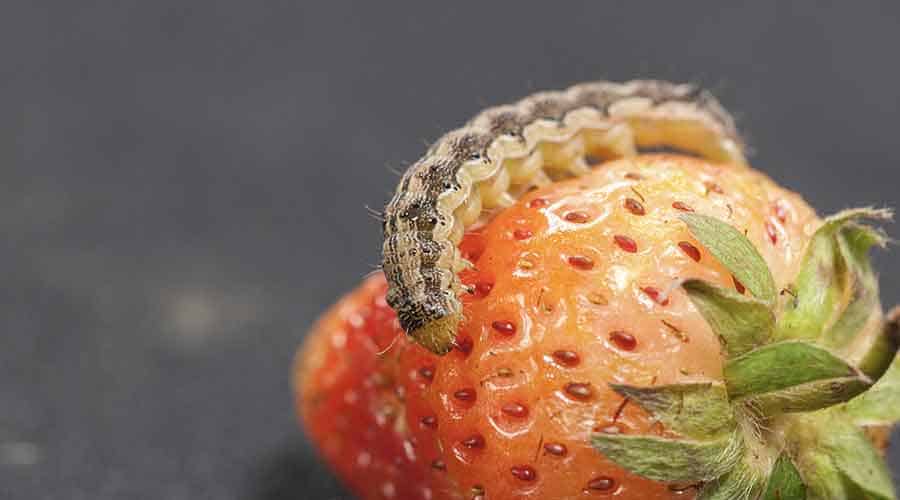
To help reduce the adverse effects of cutworms in agricultural and horticultural settings, several management strategies can be implemented:
- Cultural control: This involves adjusting farming practices to reduce the likelihood of cutworm attacks. Plowing fields after harvest destroys overwintering cutworms, while planting crops that are less susceptible to cutworms, such as legumes and small grains, can minimize damage3.
- Biological control: Using natural predators to control cutworm populations is an effective and environmentally friendly approach. Examples of natural enemies include parasitic wasps, ground beetles, and entomopathogenic nematodes4.
- Chemical control: Insecticides may be necessary in certain situations to help manage cutworm infestations. However, it is crucial to use them judiciously to minimize potential side effects on non-target organisms and the environment5.
Prevention and Control Methods
Cultural Practices
Implementing proper cultural practices can help in preventing cutworm infestations in your garden or field. Some effective practices include:
- Tillage: Tilling the soil before planting helps to expose and kill cutworm larvae that may be present.
- Crop Rotation: Changing the type of crop planted in a specific area each year can disrupt the life cycle of cutworms and reduce their populations.
- Sanitation: Cleaning up plant debris and weeds from the field or garden can help in eliminating cutworm hiding and feeding spots.
- Planting Time: Delaying the planting time can avoid the peak emergence of adult moths, reducing the likelihood of eggs being laid on your crops.
Biological Controls
Several natural enemies of cutworms can be used as biological control agents:
- Parasitic Wasps: Some species of wasps, such as Trichogramma spp., attack and kill cutworm eggs and larvae.
- Predators: Insects like ground beetles, rove beetles, and lacewings feed on cutworm larvae, providing natural control. Bird predation can also help reduce cutworm numbers.
- Nematodes: Entomopathogenic nematodes, such as Steinernema carpocapsae, can be applied to the soil to parasitize and kill cutworm larvae.
Chemical Controls
In cases where cutworm infestations are severe, chemical control methods may be necessary. Selection and application of chemicals should be done carefully to minimize potential risks to non-target organisms and the environment. Some options include:
- Insecticides: Application of insecticides, such as carbaryl or spinosad, can help control cutworm populations. Follow the label instructions closely and apply chemicals judiciously.
- Baiting: Formulations containing insecticidal compounds and attractive substances, such as bran, can be used as baits for cutworms.
- Plant-based Compounds: Monoterpenoid essential oil compounds have shown potential as antifeedants and toxicants against cutworms.
Keep in mind that regular monitoring and an integrated pest management approach are essential for effective and sustainable cutworm control.
Conclusion
Cutworms are a group of moth larvae belonging to the family Noctuidae. They are known to feed on the stems and leaves of various plants, causing significant damage to crops worldwide. Recent studies on the systematics and evolution of cutworms have revealed strong support for a number of groupings within the so-called “true cutworm” lineage, which can help better understand their origins and distribution patterns source.
One factor contributing to the sudden occurrence of some cutworm species, such as the common cutworm Spodoptera litura, is the influence of weather conditions like typhoons. Research conducted in southern Japan revealed that southerly or southwesterly cyclones carried moths of S. litura to the area, resulting in a sudden increase in their population source.
Moreover, studies on the host range of cutworm viruses have found that the common cutworm, Agrotis segetum, can be infected by both the nucleopolyhedrovirus (NPV) and the granulovirus (GV), with AgseNPV having a wider host range compared to AgseGV source. This information is critical for devising effective strategies to control and manage cutworm infestations in agricultural settings.
Controlling cutworm populations is essential to protect crops and ensure food security. For instance, seed treatment with systemic insecticide seed treatments (ISTs) has been found effective in protecting early growth stages of maize plants against the fall armyworm, acting as both a defoliator and cutworm source. Such advances in pest management strategies can pave the way towards minimizing the impact of cutworm infestations on agriculture.

